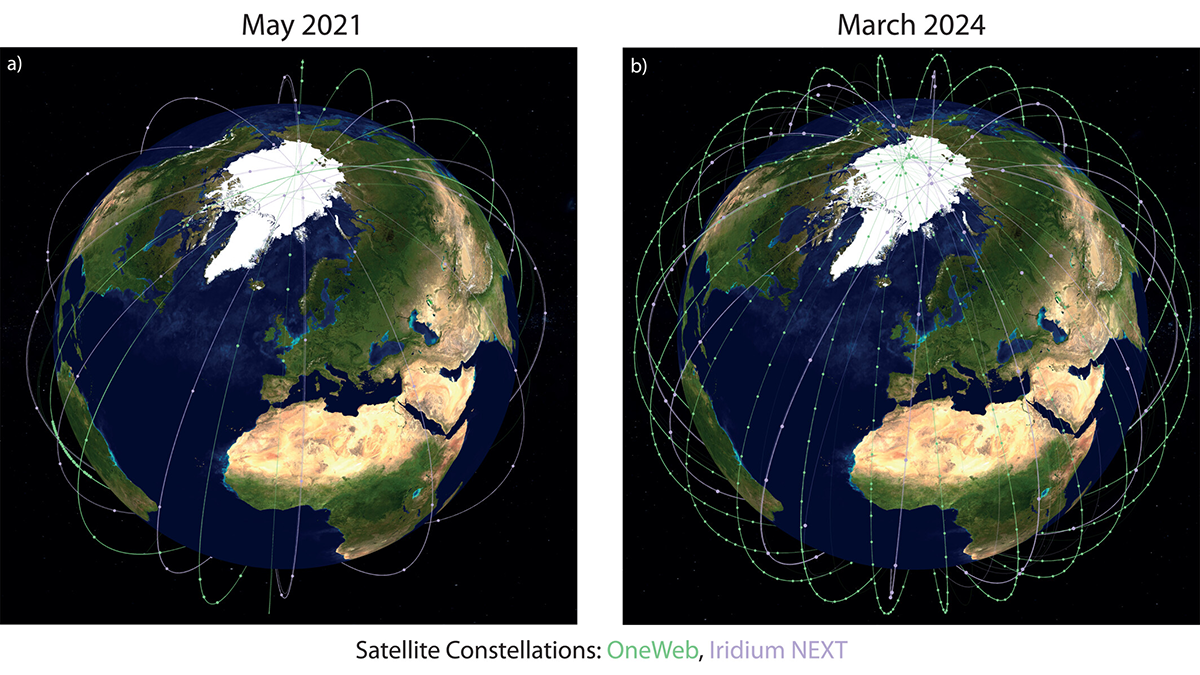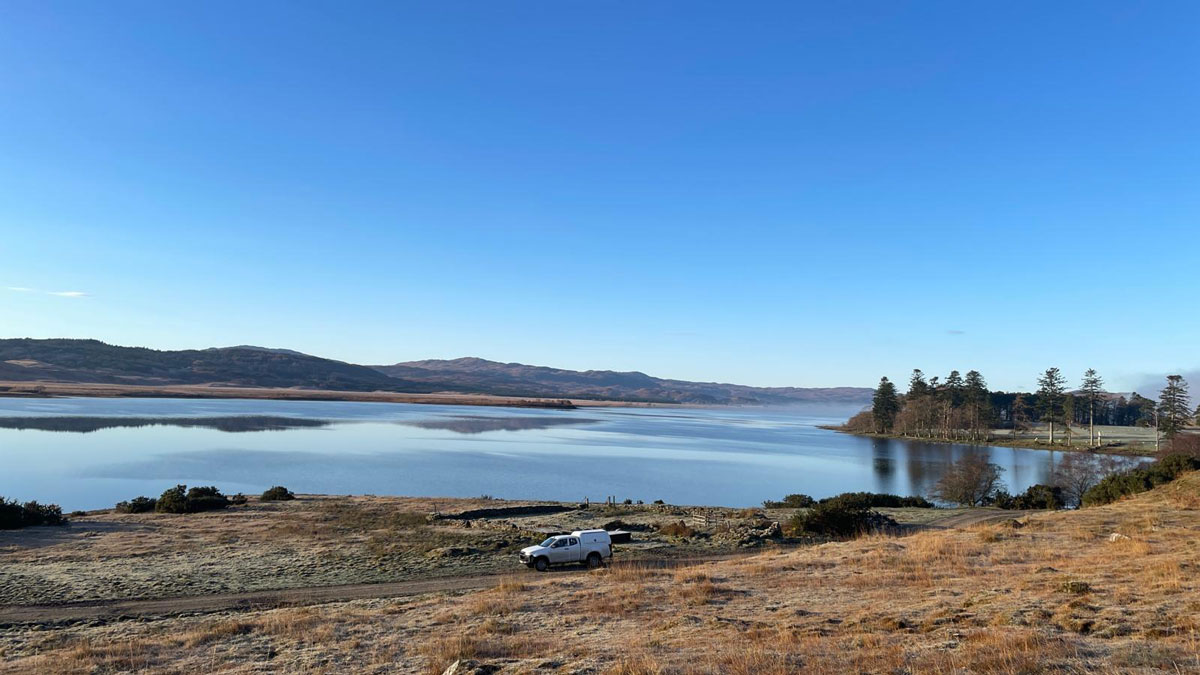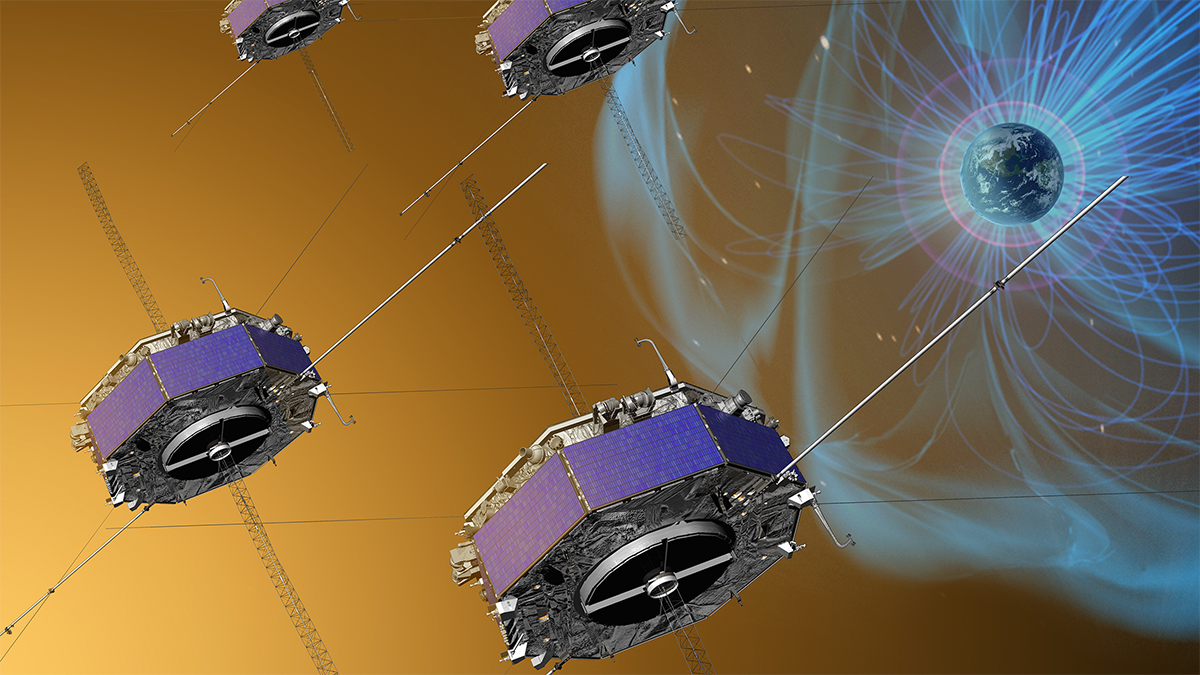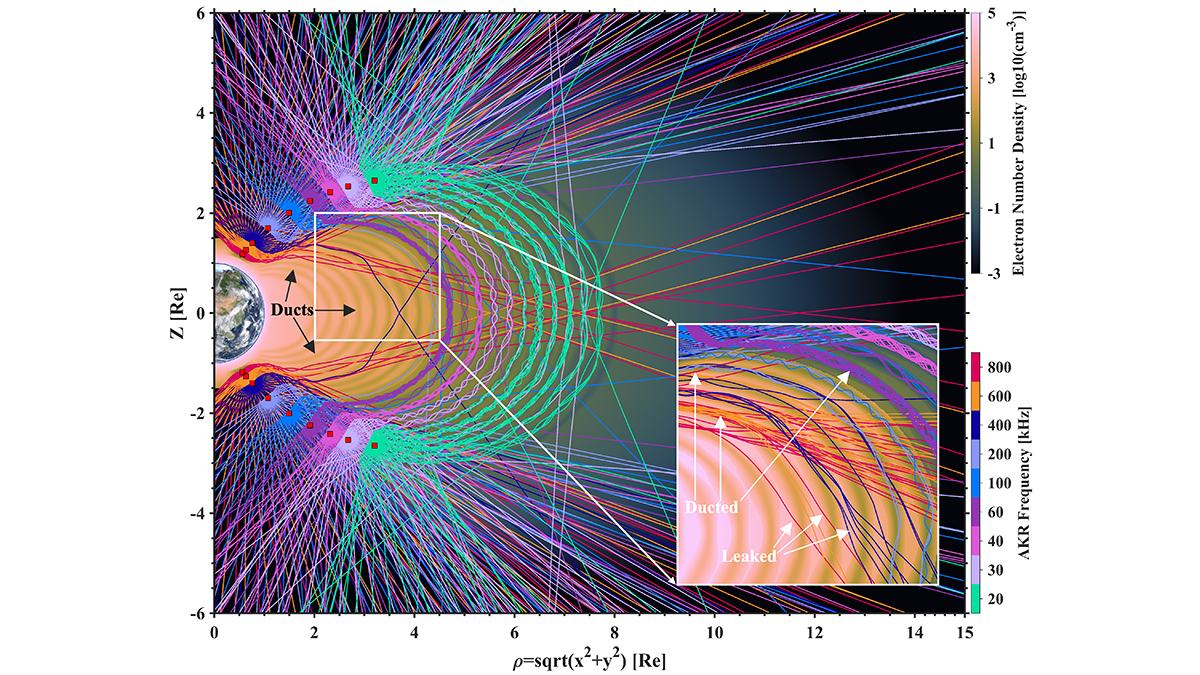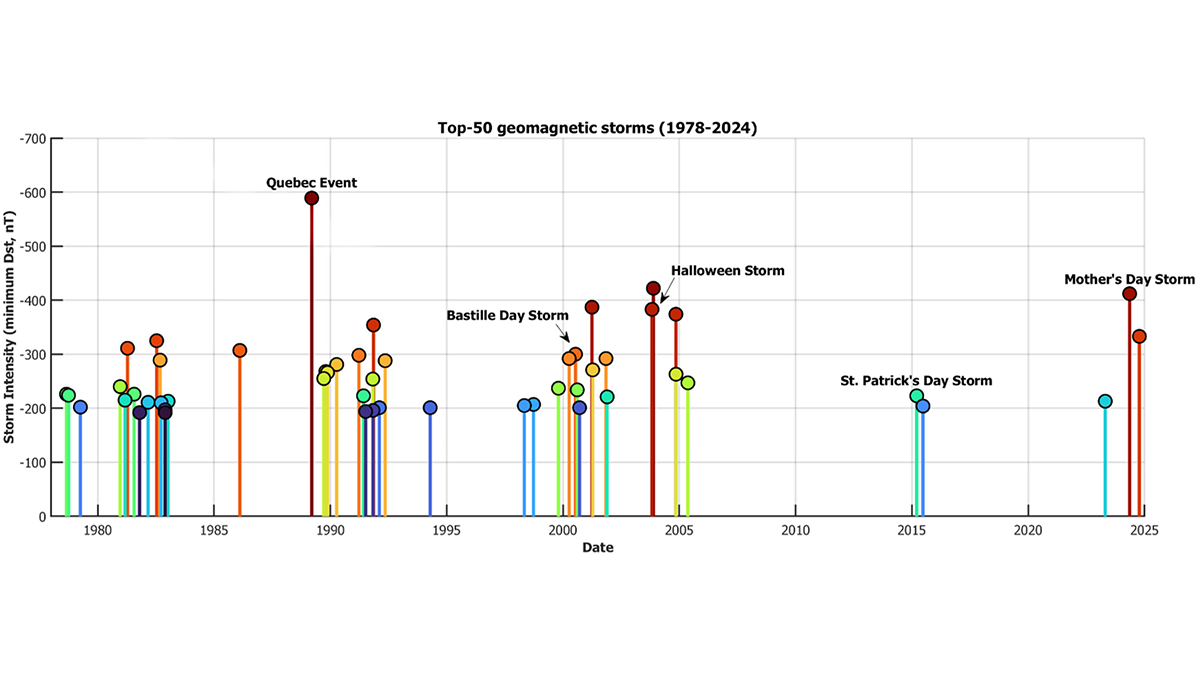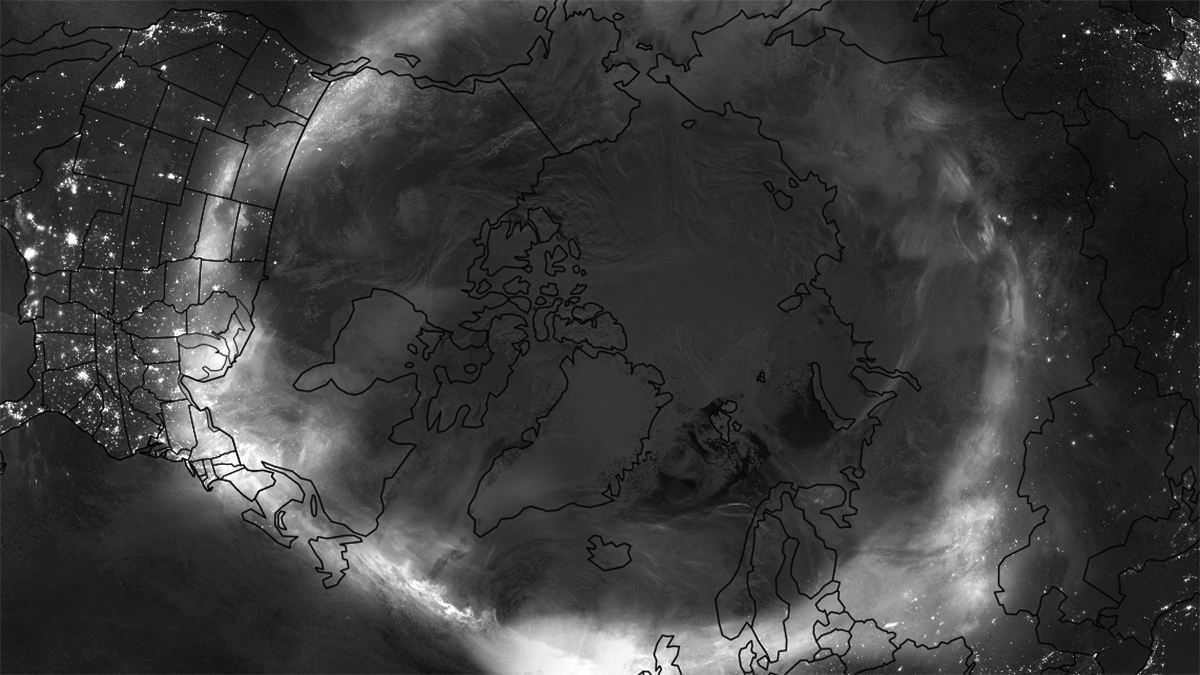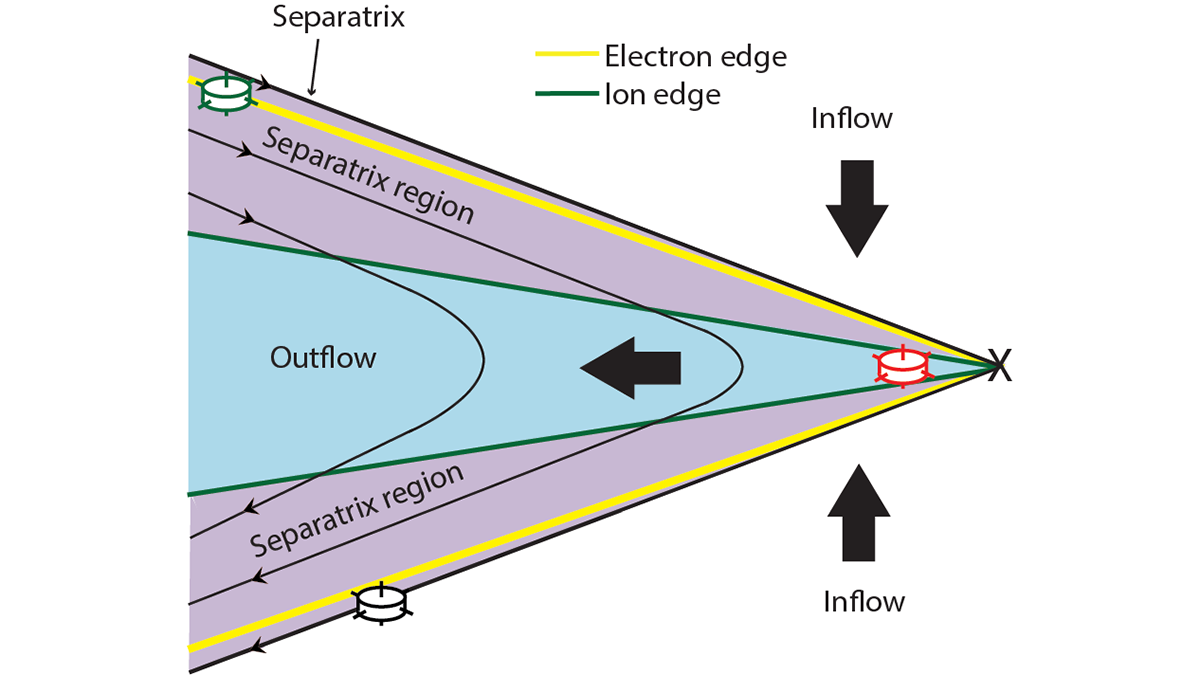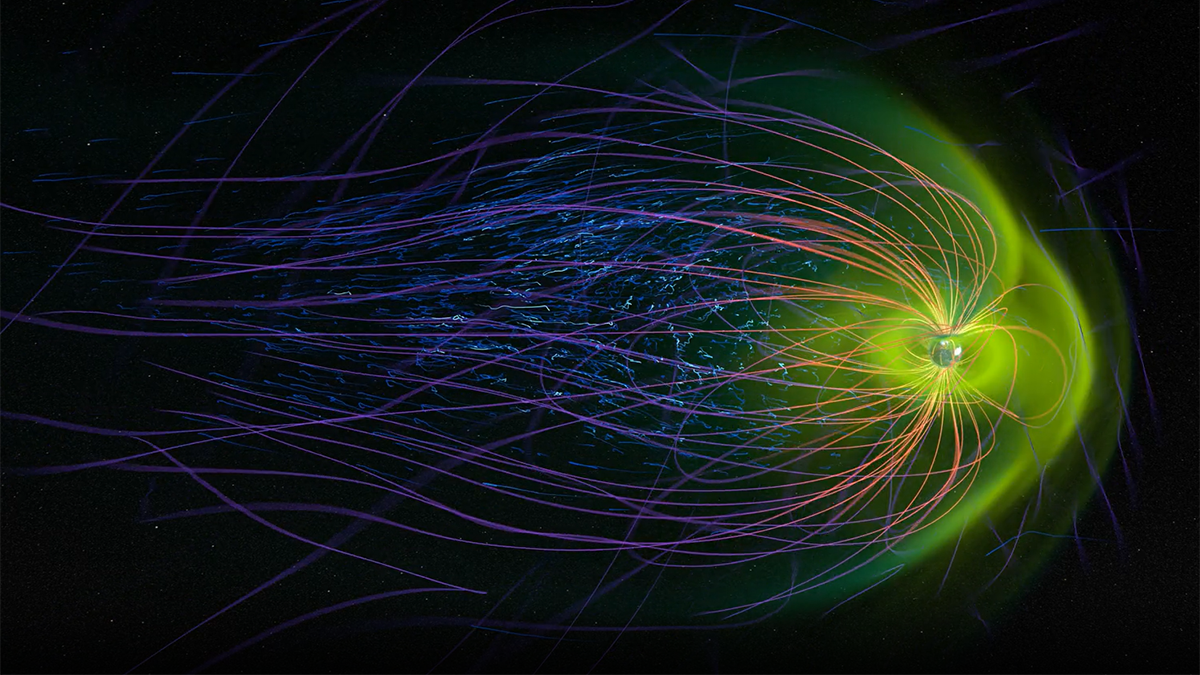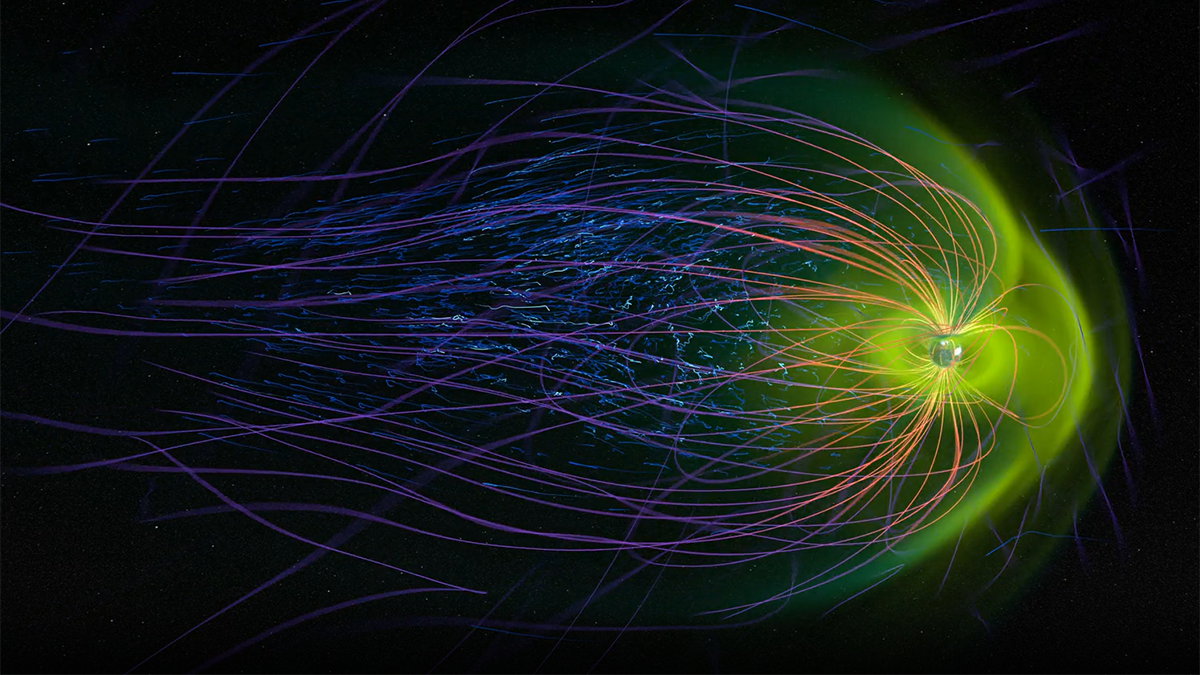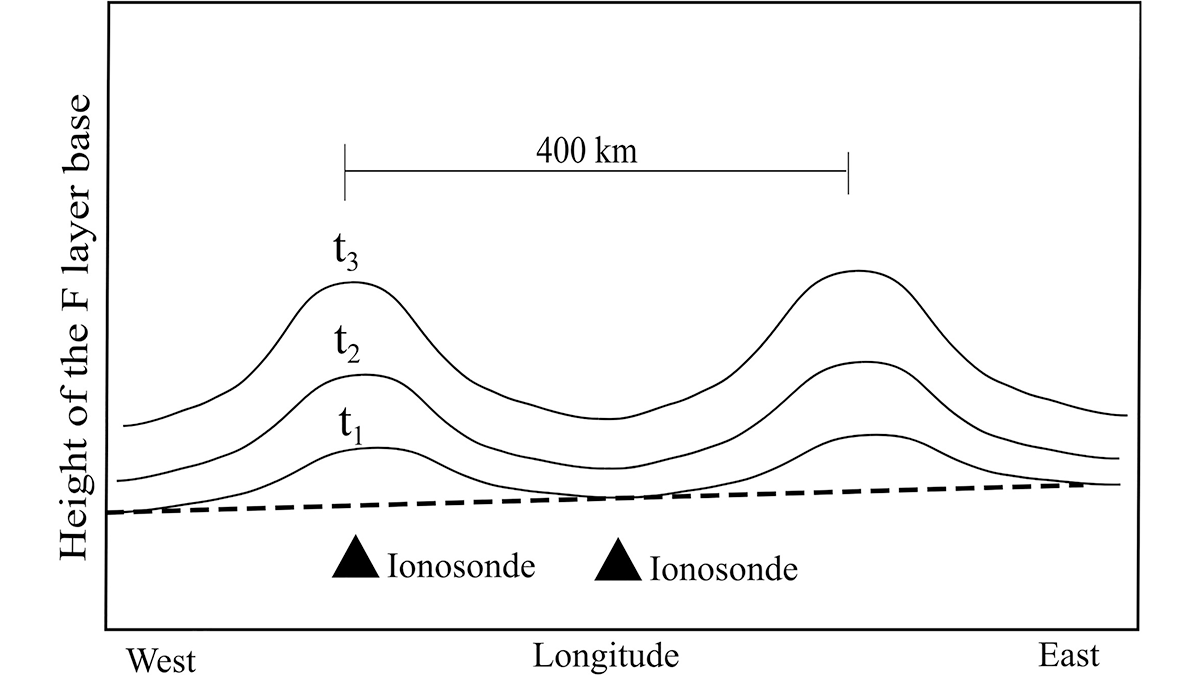Enabling unprecedented monitoring of key electric current systems in low-Earth orbit using commercial satellite mega-constellations advances space weather monitoring.
space weather (hazard)
New 3D Model Reveals Geophysical Structures Beneath Britain
Using magnetotelluric data to identify subsurface electrically conductive and resistive areas, scientists can identify underground features and predict how space weather may affect infrastructure.
Magnetic “Switchback” Detected near Earth for First Time
Until recently, this type of zigzag shape—formed by energetic rearrangement of magnetic field lines—had been seen only near the Sun.
Spacecraft Surveys Shed New Light on Auroral Kilometric Radiation
Observations show low-density space channels guide Auroral Kilometric Radiation, like wind through mountain tunnels, offering new insights into its occurrence and directionality.
The Power of Naming Space Weather Events
Mother’s Day Storm? Why not! Bastille Day Storm? Mais oui! Space scientists make the case for a standardized naming convention for geomagnetic storms, to increase public awareness and preparedness.
U.K. Space Weather Prediction System Goes Operational
Officials now have access to a suite of models they can use to head off damage to critical infrastructure.
Fast Flows in Earth’s Magnetotail Surveyed by NASA Satellites
A survey of high-speed electron flow observed by NASA satellites in the Earth’s magnetotail is presented and related to the process of magnetic field line reconnection and particle acceleration.
Ionospheric Changes Following the Geomagnetic Storm of May 2024
A new study finds that unique ionospheric changes occurred in the upper atmosphere in response to the May 2024 geomagnetic superstorm.
Prediction of Equatorial Plasma Bubbles for Navigation and Communication
Scientists demonstrate a new technique to predict the formation of equatorial plasma bubbles, a crucial space weather phenomenon affecting satellite-based communication and navigation systems.

